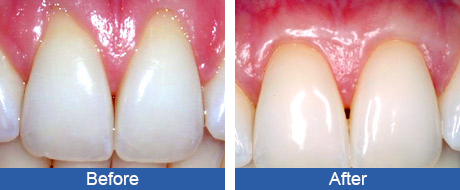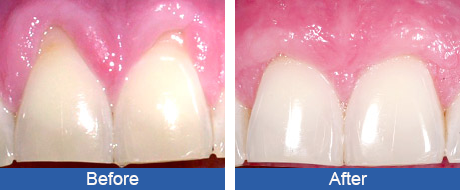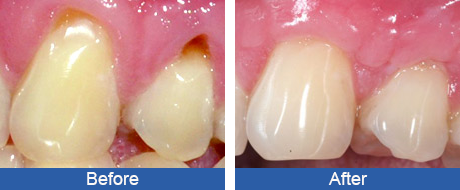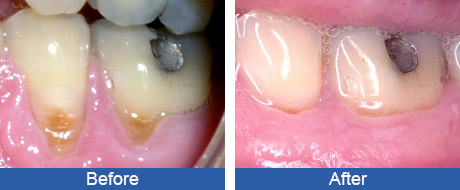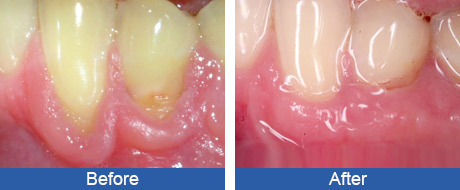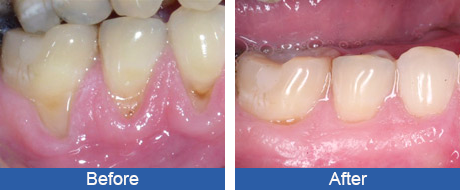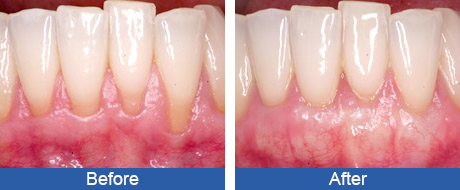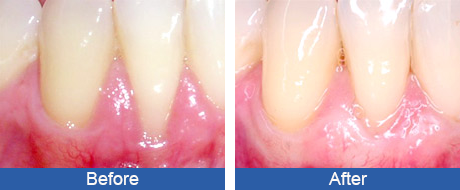Gum Recession Treatment in Pittsburgh
Our treatment for receding gums ends sensitivity and revitalizes your smile.
A Rejuvenated Smile and an End To Root Sensitivity
Overly exposed tooth roots not only flaw the aesthetics of your smile, they are often sensitive to hot and cold temperatures. This condition can now be remedied with gum grafting.
Dr. Bakuri uses microsurgical techniques to gently cover the roots of your exposed roots to improve the aesthetics of your smile and put an end to root sensitivity.
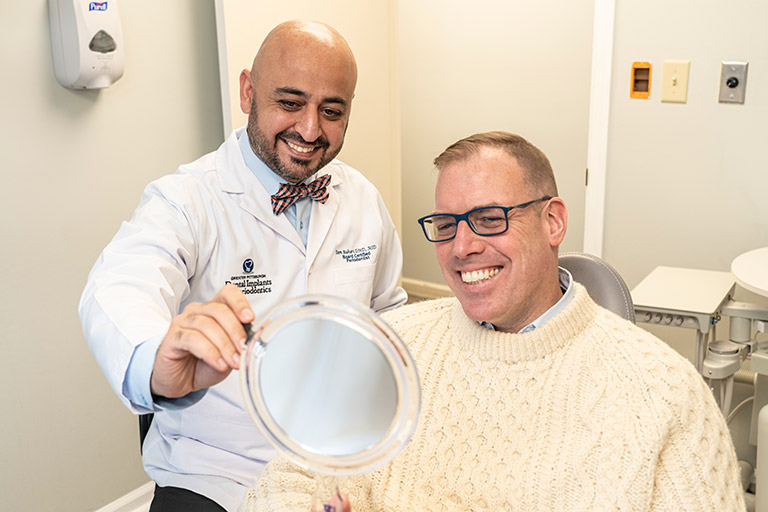
What Causes Receding Gums?
Gum recession is the exposure of the tooth roots caused by the gum tissue retracting. It is most commonly caused by one or more of the following:
- Genetics
- Teeth that are out of alignment
- Teeth grinding
- Trauma to the teeth
- Overly aggressive brushing or flossing
- Severe gum disease
The Dangers of Gum Recession
Because root surfaces are much softer than tooth enamel, they are more prone to erosion and are more sensitive to heat, cold and even sweets. Roots can become so worn that the teeth loosen or break.
Treatment for Thin Gums
Thin gums can’t support a tooth properly and will eventually lead to gum recession and bone loss. Gum grafting can also be used to treat gums that are too thin.
$199 Gum Recession Exam, X-Rays and Consultation
- Comprehensive oral examination
- Diagnostic photos
- Evaluation for gum disease
- Oral cancer screening
- Consultation with the doctor
- Written treatment plan
Call 412-487-8288 or click here to schedule your appointment.
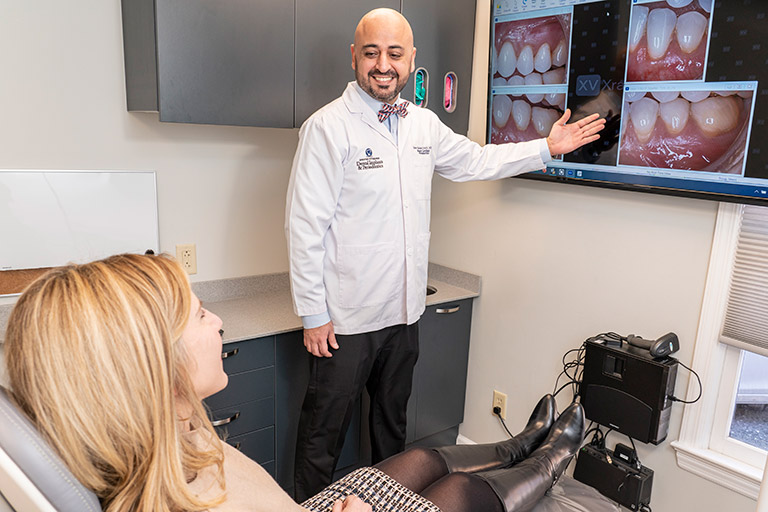
Keeping You Comfortable At All Times
Your comfort is always a top priority for our entire team. We use local anesthesia when providing gum grafting treatment, and we also offer oral or IV sedation for patients who request this.
There is very little discomfort following gum grafting, and over-the-counter pain relievers are usually recommended. A diet of softer foods is required for a few weeks, and most patients return to their regular activities the following day.
Our Gum Grafting Procedures
Dr. Bakuri Chooses the Best Option for Your Specific Needs
Dr. Bakuri employs several types of procedures when providing gum graft treatment and will determine which procedure, or combination of procedures, will best suit your specific needs. You can be assured that any option will be provided with skill, compassion and with your comfort in mind.
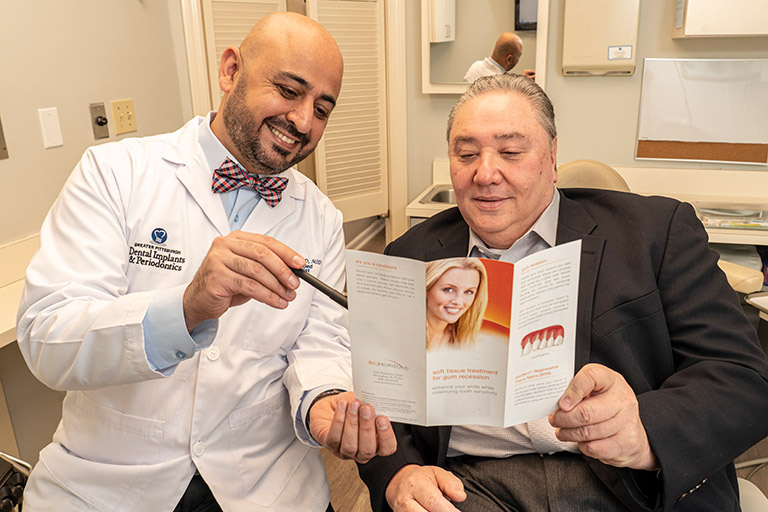
The autogenous method obtains tissue from the roof of your mouth to use for grafting. Dr. Bakuri uses special methods to make this surgical procedure nearly painless, and requires very little, if any, dressing to be applied to the tissue removal area.
AlloDerm® is tissue from a donor bank that has undergone stringent testing by the U.S. Food and Drug Administration. AlloDerm is used for most gum grafting procedures. It is the most sophisticated method for grafting gums and offers many benefits.
Since natural AlloDerm tissue can be obtained in large quantities, many areas of recessed gums can be treated at once. For patients who don’t have enough tissue available, or simply don’t want to have tissue taken from the roof of their mouth, AlloDerm is the best option.
Proteins, platelet-derived growth factors and guided tissue regeneration are methods incorporated into the grafting procedure when gum recession is quite severe.
Emdogain® gel is a revolutionary product that utilizes a protein to stimulate regrowth of gum tissue that has been lost due to severe periodontitis.
Platelet derived growth factors are proteins that can stimulate gum regrowth and healing. They are particularly beneficial for blood vessel reformation.
Guided tissue regeneration involves injecting collagen to act as a barrier between tissues that heal more quickly (gums and ligaments) and bone. This procedure allows time for the bone to regenerate without the encroachment of the faster healing tissues.
Call 412-487-8288 or click here to schedule your appointment.




